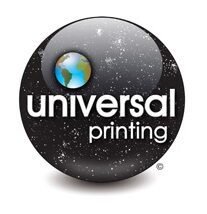DPI… PPI… dots per inch… points per inch… pixels per inch… No matter how you say it, it all comes down to one simple thing: RESOLUTION. In order to get the BEST print quality from your images, you need to know it, understand it, and never take it for granted. First off, we need to know what resolution MEANS. Resolution is how many dots/pixels fit into one inch. The term “dots per inch” (dpi) and “pixels per inch” (ppi) are often used interchangeably. For the most part, images used for the web will be LOW RESOLUTION (referred to as “Low Res”) at about 72 – 95ppi. For digital or offset printing, we here at Universal Printing suggest that you use images between 300 – 400dpi. The higher the resolution, the sharper and crisper your printed image will be. Low resolution images will look fuzzy, jaggy and blurry. Who wants that? So, when dealing with images for print, here are a few simple rules to follow: 1. Photos should be at least 300dpi at final production size in the layout. 2. Graphics that include text should be at least 400dpi final output size (so the edges of the type remain clear.) 3. Resolution and image size are directly related to each other. Enlarge an image, the resolution decreases; reduce an image, and the resolution increases. For example: a 2 x 2″ image at 300 dpi (acceptable) enlarged to 4 x 4″ has a new resolution of 150 dpi (unacceptable). To help you figure your enlargement/reduction resolution, check out our Resolution Calculator. 4. You can always be taken away, but it can NEVER be added. True, you can shrink your image, but to get HIGH RESOLUTION images, the resolution needs to be set during the initial creation of that image. So if you’re scanning, shooting with a digital camera, or creating from scratch, what you start with is the most you’ll get. 5. What you see is NOT what you’ll always get! Computer monitors generally have a display setting of 72 dpi. WAY lower than the 300-400dpi we expect for print production. If we ever tell you that some of your images are low resolution, they may not look bad on your monitor but will likely print blurry or jagged. Things to avoid: Web images are predominately low resolution (72-96 dpi) GIF or JPEG files. This resolution is good for quick transmission over the internet, but is not acceptable for use in printing. Do not save images or graphics from a website to use in your print project! “Upsampling” is when a low resolution image is saved to a higher resolution with no changes in dimensions. This simply adds more dots per inch (dpi), but creates blurry images, ugly blocks of color, and high contrast in images. The only way resolution can be improved is by decreasing the image size, or by recapturing the image at a higher quality setting.
